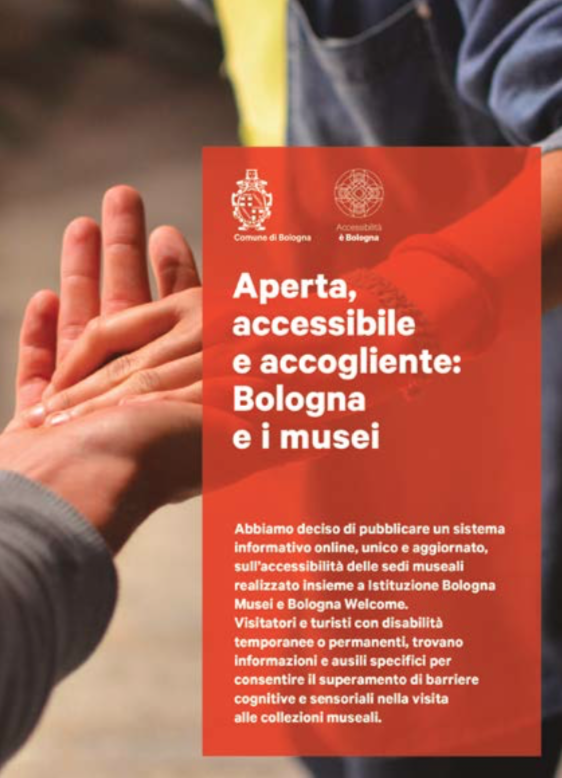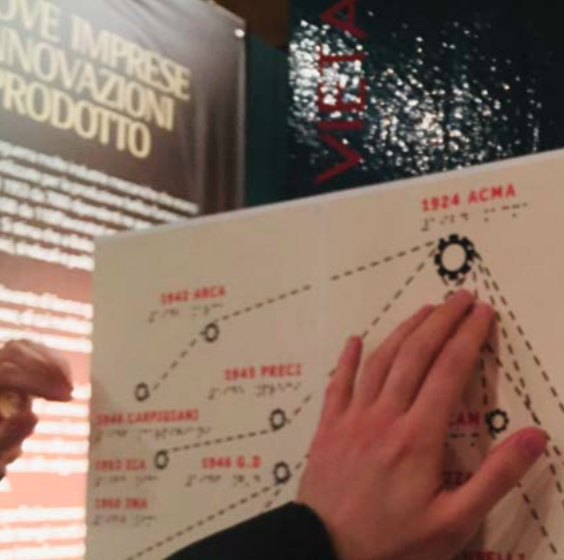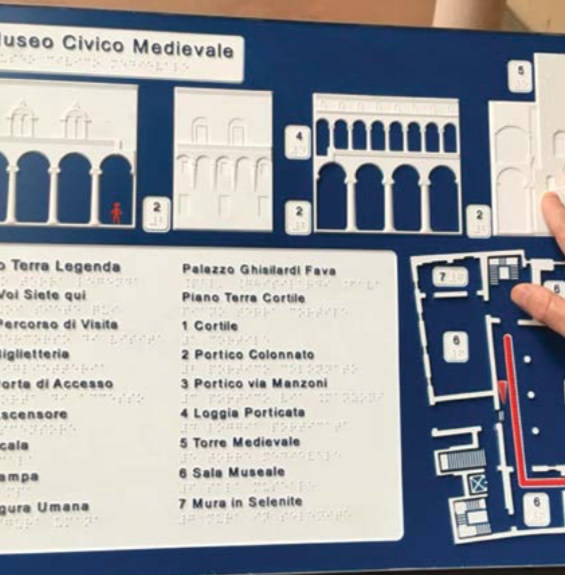
In 2018, the City of Bologna undertook a process aimed at improving accessibility to the city’s museums for people with physical, sensorial and cognitive disabilities. The Accessible Tourist Information project was designed and implemented by the City's Department of Culture and Promotion in collaboration with the Bologna Museums Institution and Bologna Welcome under the supervision of the office of the Disability Manager, the scientific and professional support of the Gualandi Foundation for the Deaf, the Institute for the Blind Francesco Cavazza and the Accaparlante Coop Documentation Centre Handicap as well as the contribution of the Tourism and Commerce Department of the Emilia-Romagna Region. Launched with the objective of improving the accessibility of the city's tourist and cultural offering, the project began with inspections aimed at finding the level of usability of the city’s museums. Inspections were carried out with persons with disabilities, according to the principle of participatory design, not only as examiners, but as active contributors in the needs analysis and subsequent project proposal process.

Based on the data gathered, a mapping of the accessibility of the museums involved has been carried out to collect and structure this information so that it can be available to the public on the museum websites and on the portal of Bologna Welcome. For example, museums describe online accessibility and usability features for their collections and venues by type of disability (motor, auditory and visual), an information system available to all visitors. For the enjoyment of museum venues and collections by persons with disabilities, the project also generated specific aids and tools such as tactile maps for orientation and mobility as well as historical and artistic descriptions of works and monuments, captions in braille and large font, videos in Italian sign language, and information in plain language. To date, inclusive projects have been designed in three "pilot" museums: the Certosa cemetery, the Industrial Heritage Museum and the Medieval Museum. Furthermore, training courses are underway for the staff of the three museums so as to be prepared to welcome and communicate with persons with disabilities from the moment they arrive and throughout their journey in the museums.

A project thanks to which persons with disabilities can enjoy the cultural heritage without "any distinction, exclusion or restriction on the basis of disability," as indicated in the 2006 UN Convention on the Rights of Persons with Disabilities.




.png)